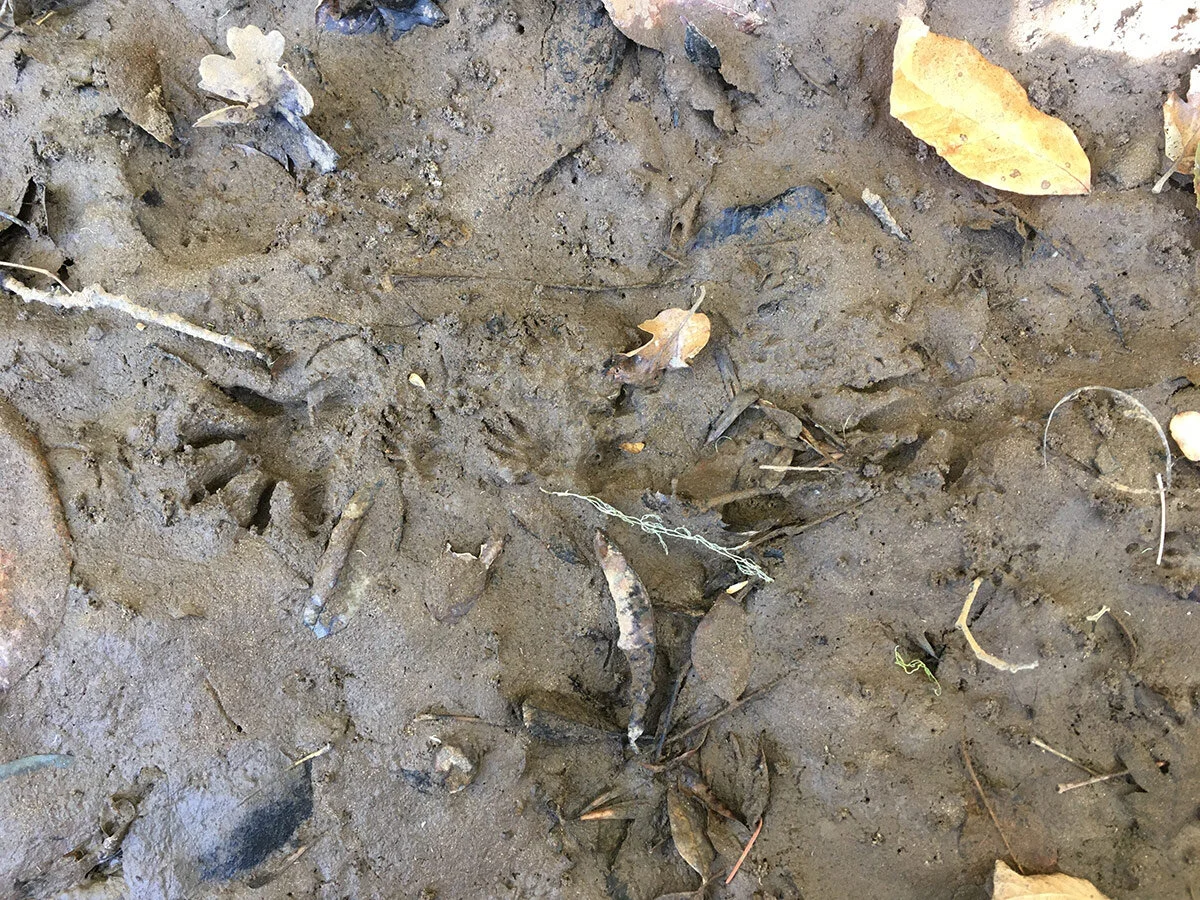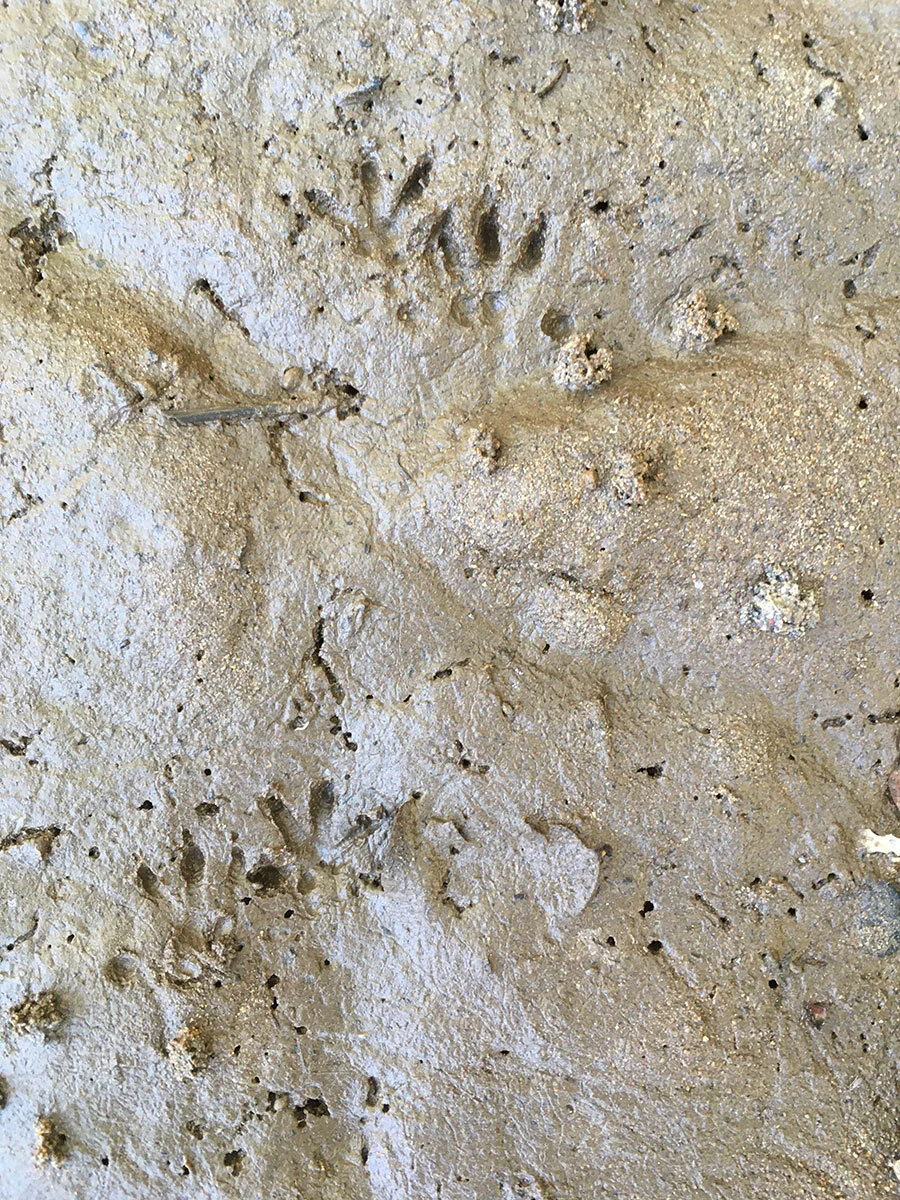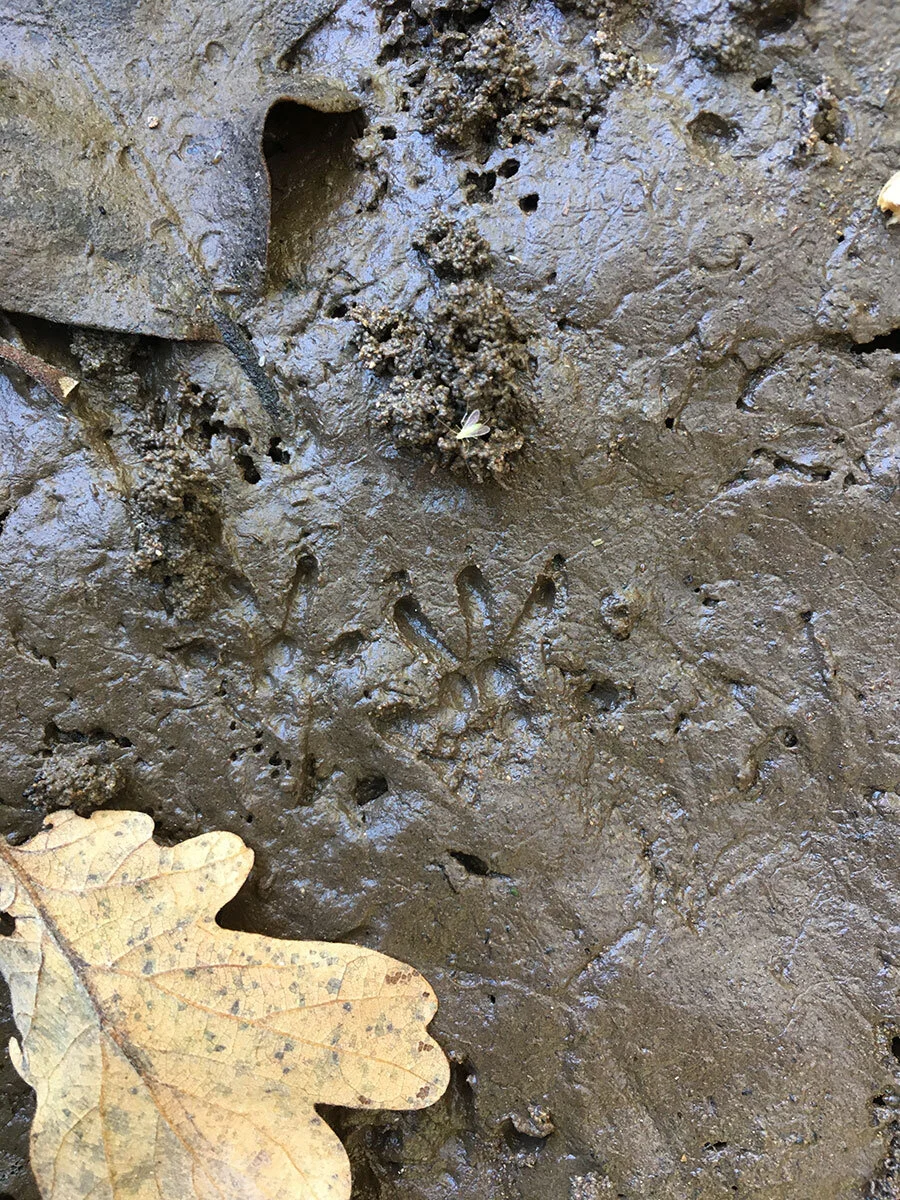There are a pair of rabbits that hang out in this little thicket next to the river. They forage along the edge, seldom venturing more than a few feet away from cover. I was walking along the trail the other day and came upon them foraging. Their instinct is to stay stone-still. I took a couple quick photos as they stood absolutely motionless. I decided to keep walking so they could hop into the bushes where they feel safe and can relax. I looked back after a few steps and one had already disappeared. The other one waited until I was probably fifty feet away before it moved into the bushes. They have large eyes and ears that are acutely tuned into the sights and sounds in their environment. There are many predators out at the arboretum, so they need to be aware. Whenever I see them, it reminds me to check in with my surroundings - listening to the river, feeling the wind, watching for birds, smelling the earthly scents in the air and tasting the yummy snacks from my pack.
Eastern Fox Squirrel
I noticed something falling from a tree. I looked up to find this squirrel busily opening the samaras of a bigleaf maple and eating the seeds. I was amazed at its ability to balance on such a small branch as it ate. It sat there so effortlessly, even though apparently it was only gripping the limb with its toes. Its tail was an integral part of the high-wire act. At this moment, it tucked its tail forward to act as a counterbalance. For awhile I continued to watch its arboreal performance as it climbed around and fearlessly navigated its way throughout the tree. It was at home up there.
I opened the end of one of the wings to examine its contents. The seed had a thin, brown skin that encased what appeared to be a bundle of tender, green leaves.
Voles
The south meadow of Mt Pisgah is a network of well-worn paths connecting entrances leading to small burrows. This is the work of voles and they are active during the day and night. During the summer at dusk, I would watch the meadow come alive. As I stood on the road, I would see this little brown animal quickly dash in and out. They only leave the safety of their burrow for a few seconds. Sometimes I saw a dozen or more at once. I’m hoping to capture a photo of one this summer. Their small tubular scat is seen along their trails, especially near the burrow entrance.
While looking around this sea of holes and pathways, I came across many slugs and a rough-skinned newt. I also noticed small, perfectly round holes around many of the burrow entryways that were maybe made by worms. Additionally, I see American kestrels, great-horned owls, coyote scat and snakes all around this meadow. This grassy field is a fascinating and thriving world!
Tracks
Animals are bare footed with mud squishing between their toes!
One of the benefits of the rain is that it creates an excellent canvas of mud to capture the tracks of animals. Even though the maker of the tracks is gone, they still emanate life and mystery. Animals are in intimate communication with the earth. I imagine that immense knowledge of the landscape is absorbed through their direct connection with the ground. A track is a gift. It teaches me to also learn and understand life through my sense of touch. It reminds me that we are sharing this world with other creatures.
Townsend's Chipmunk
A cottonwood tree has fallen over through a big leaf maple tree and is being propped up. A small habitat of protective cover was created where the tree limbs crashed on the ground. Every time I walk past, I see this chipmunk scampering around this thicket of tree branches. When I walked passed recently, it paused at this window where we were able to get a good look at each other. Until this interaction, it had been very shy, stayed in good cover and would occasionally chatter at me a little.
Previously, I posted about a chipmunk (Chipmunk Hollow, 12/08/20) which I haven’t seen around that area for a few weeks. So, I’m glad to have found another chipmunk friend to watch and learn from.
Chipmunk Hollow
Along the Lilly Pond trail, I keep crossing paths with this little chipmunk. As it navigates its way along the forest floor searching for food, I am impressed by its agility and ability to move quietly. On a number of occasions I have watched it climb up this tree, disappear into this small cavity and then return to the opening a few minutes later. Sometimes it will climb back down and return to its activities on the forest floor. I’m uncertain of the purpose of this cavity. Is this a place of shelter, a food cache or a lookout? I would like to spend more time observing my little friend and learn more about its life. I had my camera with me the other day and was lucky enough to take a reasonable photo of it peering out of its hollow.
Deer Signs
There are deer living out at Mt Pisgah, and I see plenty of signs they leave behind indicating their presence. You can see trails leading through the meadow, footprints left on soft ground and a variety of different scat depending on the season and food source.
Also during the mating season or rut, males will rub on trees to create a sign post that marks their territory. It is a visual marker and a scent marker.
The Work of a Skunk?
I found paper comb next to this hole in the ground. When I looked into the hole I could see parts of the paper nest still attached to the lining of the hole which was about the size of a volley ball. I have seen many Yellowjacket nests in the meadows around the arboretum this year. Skunks are known to dig up their nests and eat the larvae and adults. Apparently they are able to tolerate their stings. Skunks are omnivores. They eat small mammals, birds, bird eggs, reptiles, amphibians, insects, fruit, grubs, earthworms and various plant material. I’m going to be on the look out for more signs of skunks. Wish me luck.
Beaver - Cut Branches
Beavers are North America’s largest rodent. One of their notable features, besides their long flat tail, is their large chisel-like incisors which are each about a quarter inch wide. The beaver has a extensive list of foods that it eats, and one of its favorites is the cottonwood tree shown here. Out at the arboretum, I can usually find these small branches cut off at an angle, and I often see branches that it has stripped lying around the bank of the river. Beavers eat the inner layer of bark (cambium), buds, leaves and twigs. Beavers are a keystone species and through their dam construction, they create a diverse ecosystem. I highly recommend reading more about these remarkable creatures.
Camas Pocket Gopher
If you go above the White Oak Pavilion at the arboretum, you will see mounds of dirt everywhere. This is the industrious work of a pocket gopher. They dig extensive tunnels and all that dirt gets deposited out in these fan-shaped mounds. If you sit quietly and wait, you will see them shoveling dirt out of a hole, and with a burst of energy, launch the soil away from the entrance. They get their name from fur-lined cheek pouches that they use to transport plant food that they gather in their underground tunnels. Sometimes when I am walking along the trail, I will see vegetation moving and then slowly disappearing as it is pulled underground. I often see them pausing at the entrance of the hole, cautiously sniffing the air. At that moment, I noticed that there was a white patch on its chin. When I looked it up, this species of pocket gopher (Thomomys bulbivorus) is endemic to the Willamette Valley.



























